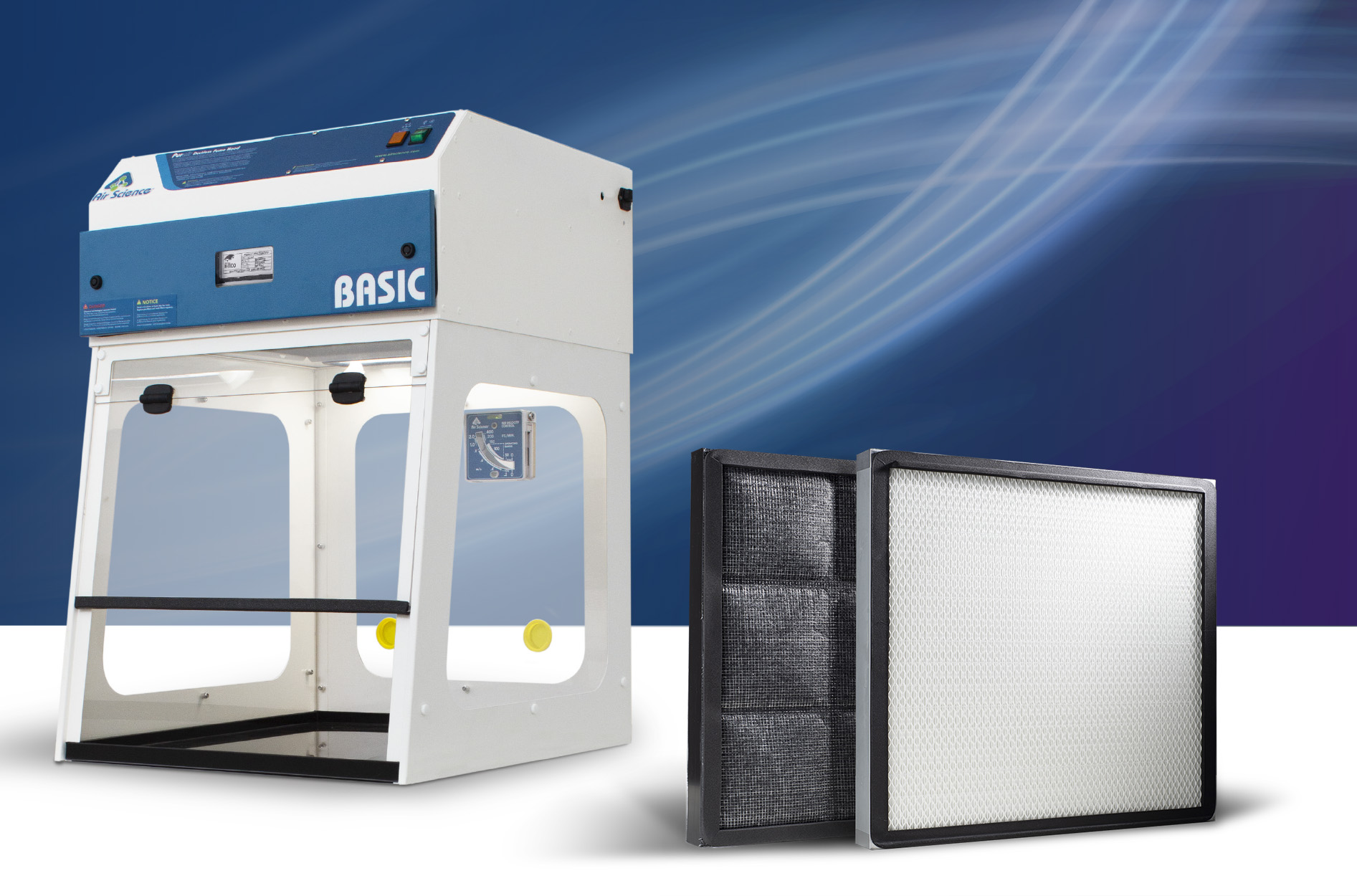
- christina
- Comments Off on Maximize Lab Safety: Filter Replacement Best Practices
- BLOG, Life Science, UK Filter
When to replace your laboratory’s carbon or HEPA/ULPA filters.
Regularly replacing your laboratory’s carbon or HEPA/ULPA filters is crucial for maintaining safety and ensuring optimal filter performance. Several factors influence the frequency of filter replacement, including temperature, humidity, residence time, filter age, evaporation rate, and chemical concentration. These conditions can significantly affect the filter’s effectiveness in trapping harmful fumes and particulates.
If you’re unsure precisely when to change your ductless fume hood filter, it’s often best to follow the standard operating procedures (SOPs) that are in place for your facility. As a general guideline, however, your laboratory filters should be changed once they reach the maximum recommended service life—even if your ductless fume hood is used infrequently. HEPA filters typically have a lifespan of 1-2 years, while activated carbon filters should be replaced every 12 months. However, it’s essential to note that actual replacement intervals may vary depending on the specific laboratory environment and usage patterns.
By adhering to recommended replacement intervals and carefully considering the factors that impact filter performance, you can ensure the safety of your laboratory personnel and maintain compliance with industry standards.
The importance of high-quality replacement filters.
While regular filter replacement is an essential first step, using high-quality replacement filters is equally important. Cheap or low-quality filters may seem like a cost-effective option, but they can pose significant risks to personnel safety and compromise the integrity of your laboratory environment.
Proper filter design plays a vital role in effective filtration. High-quality HEPA/ULPA filters feature uniform pleating that maximizes surface area and optimizes airflow, ensuring efficient capture of particulates. For activated carbon filters, even carbon distribution throughout the filter is essential for consistent performance. Some manufacturers use inferior carbon packing or inferior materials, like common charcoal, that are not chemically prepared to trap specific chemical vapors, potentially exposing lab personnel to hazardous substances. High-quality filters employ durable, mesh outside the filter frame that helps maintain the integrity of the carbon bed to prevent carbon shifting that can occur during transportation or handling, compromising the filter’s effectiveness and reducing its lifespan.
Finding a Trusted Source for Replacement Filters
When it comes to selecting the right filters for your laboratory, compromising on quality is never an option. Selecting a single source for all your laboratory replacement filter needs can allow you to easily reorder both carbon and HEPA/ULPA filters in one order.
When sourcing replacement filters, it’s essential to find a manufacturer that chooses only the highest-quality materials. Air Science® recommends Filtco Filters for all replacement filter needs. Filtco Filters’ expertise extends beyond activated carbon filters. They also specialize in manufacturing high-performance replacement HEPA and ULPA filters. In their ISO 9001-compliant manufacturing facility, Filtco Filters manufactures replacement filters that are meticulously engineered for quality and performance. Their replacement filters are also designed to fit most major brands of ductless fume hoods, providing a convenient and reliable solution for your laboratory’s filtration needs.